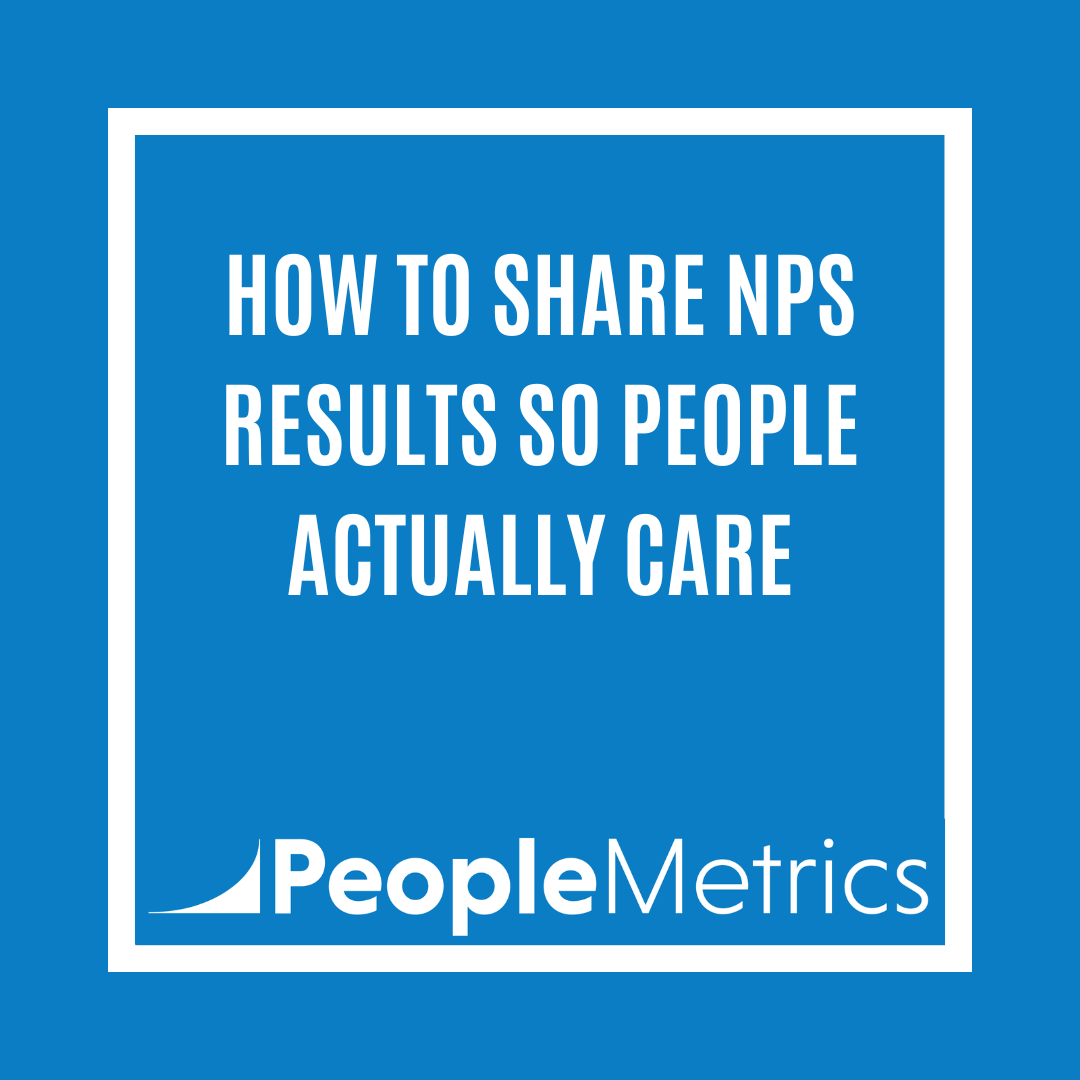By now, you’ve built a solid NPS foundation: you’re asking the right customers, at the right time, with a survey designed to give you more than just a number.
You’ve done the work to dig into the “why” behind your NPS score.
But there’s a common place where even good programs stall out: sharing the results inside your company in a way that people trust, understand, and want to act on.
If you’re stuck emailing static slides once a quarter and hoping for the best, you’re leaving real impact on the table.
The Problem: A Number No One Owns
When NPS data stays buried in a spreadsheet or a single CX presentation, it becomes just another metric that doesn’t feel connected to the day-to-day work of your teams.
The reality is people don’t remember a number. They remember a story, especially when they see how that story relates to the work they do every day.
Make It Real, Make It Local
One of the best ways to bring your NPS results to life is to break them down so teams see themselves in the data.
Take a retail example. Instead of just saying, “Our overall NPS is 52 this quarter,” share what that means for each region or store. Show how their scores have changed over time. Highlight where Promoters, Passives, and Detractors cluster and what customers are actually saying. With real customer quotes!
When a store manager can see, “Customers in your location love the friendly staff but keep mentioning slow returns,” they know exactly where to focus.
Put a Human Voice to the Numbers
Never underestimate the impact of real comments. A quote from a Promoter or Detractor is worth more than any slide of percentages.
A positive comment like, “Your delivery driver goes above and beyond every time,” can motivate a team far more than a graph can.
A tough comment like, “I love the product but your customer service never returns my calls,” shows a clear, fixable problem.
Companies that do this well don’t just drop a few quotes in a deck occasionally. They build customer voices into regular updates, town halls, and team meetings, so that listening to customers becomes part of the culture.
Connect Insights to Ownership
Once people see the story, they need to know how it connects to what they do.
If your open-ended feedback and driver analysis point to onboarding pain points, the customer facing team should know and be part of fixing it. If the feedback highlights digital frustrations, loop in the product team.
It’s not enough for the CX or market research team to own the score alone. The people who shape the experience should shape the improvements, too.
A quick example: One B2B Telecommunications company makes NPS themes a standing item in their monthly team check-ins. Each department sees exactly what’s driving their part of the score and what actions they’re taking to move it. That shared ownership is what builds trust in the data.
Celebrate What’s Working
It’s easy to get stuck focusing on what’s broken but recognizing the bright spots is just as important.
When teams see that their efforts to improve the customer experience are making a difference, they stay motivated to do more.
One national bank scrapped their boring branch scorecard PDF and replaced it with a quarterly “NPS Honor Roll.” Branches with the biggest gains didn’t just see a number, they got recognized in front of peers, with the actual customer comments that made the difference!
Make It an Ongoing Conversation
NPS shouldn’t be an annual post-mortem. When you share results regularly (and make them easy to understand) people start to trust the number. They see that it’s more than just a KPI: it’s a window into what your customers value and what they want fixed.
Dashboards that are simple, clear, and accessible help teams track progress in real time. Quotes and trends keep the story fresh. Regular touchpoints keep everyone aligned.
Checklist: Sharing NPS So It Sticks
Before you move up the NPS maturity curve, ask:
- Are our results easy for people to understand, not just a number, but a story?
- Do we break down the score by product, region, or team so it feels relevant?
- Are we sharing real customer voices, not just data points?
- Do our people know what they can do with what they’re seeing?
- Do we celebrate improvements, not just flag problems?
What’s Next
Your customers are telling you what they need. You’re sharing that story inside the company in a way that people hear. Now comes the part that separates good programs from great ones: closing the loop. That is, going back to your customers and showing them that you heard them, and that you’re fixing what matters.
That’s what we’ll cover in the next blog post in this series.





